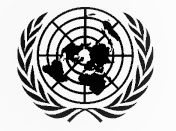Interviewing of witnesses/victims
Interviews may be an important element of a fact finding mission. Therefore, ample consideration should be given the need for and the modalities of interviews in the planning of a mission. Such planning should consider the involvement and consent of the Member State receiving the investigation. Any questionnaires employed should be directly related to the investigation of alleged use of CBT weapons. Applicable epidemiological, medical, veterinary medical, and other questionnaires have been developed by relevant international organizations. During pre-mission planning, the expert(s) should work from those models to tailor a questionnaire to the circumstances at hand, as indicated in Appendix A. Interviews should be conducted to elicit information pertinent to the investigation and with consideration to tailoring interview techniques to reflect cultural factors that might otherwise inhibit eliciting of useful information. Interview roles and responsibilities should be assigned with, at a minimum, the designation of which team member will serve as the lead interviewer and which team member will record comments.
Investigators should ask unambiguous questions. They should refrain as far as possible from leading witnesses or victims and should leave them to say what they saw, heard or felt. Interviews should be conducted with openness to the possibility that the interview may reveal unexpected information. In such instances, the interviewer should ask follow-up questions appropriate to develop possible investigative leads.
The witnesses/victims should be asked to illustrate their account by drawing a sketch map of the area of the incident and, if possible, diagramming any munitions and/or devices and markings on those items.
All interviews should be recorded. The investigation team will inform all interviewees that it will handle all interview data in a confidential manner.

